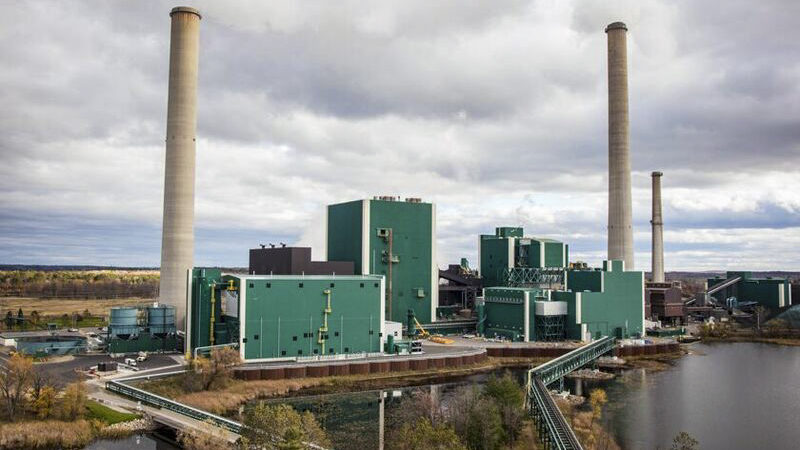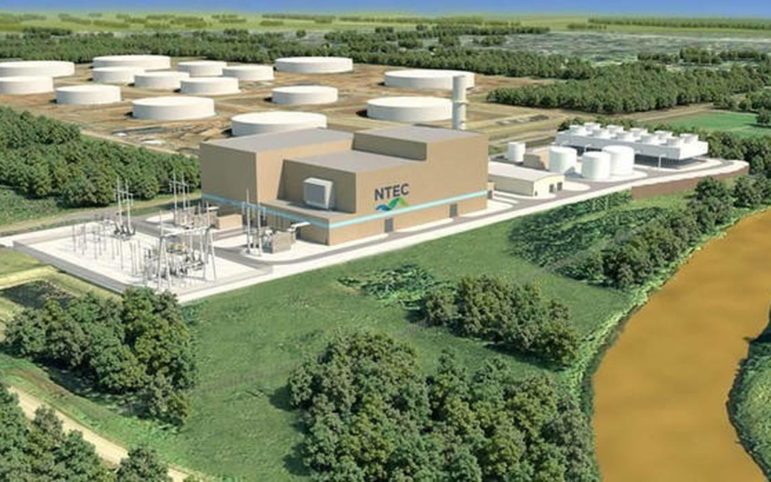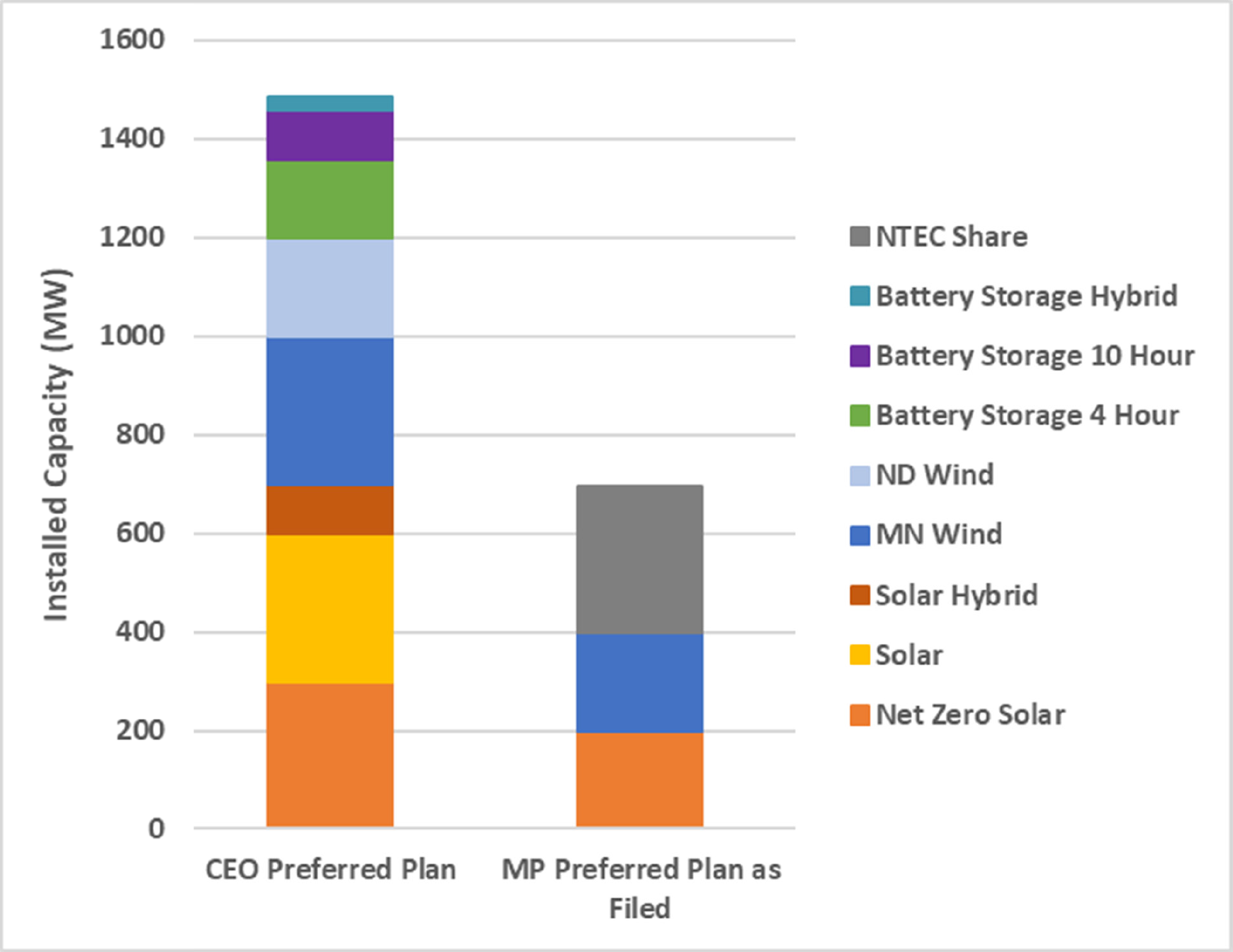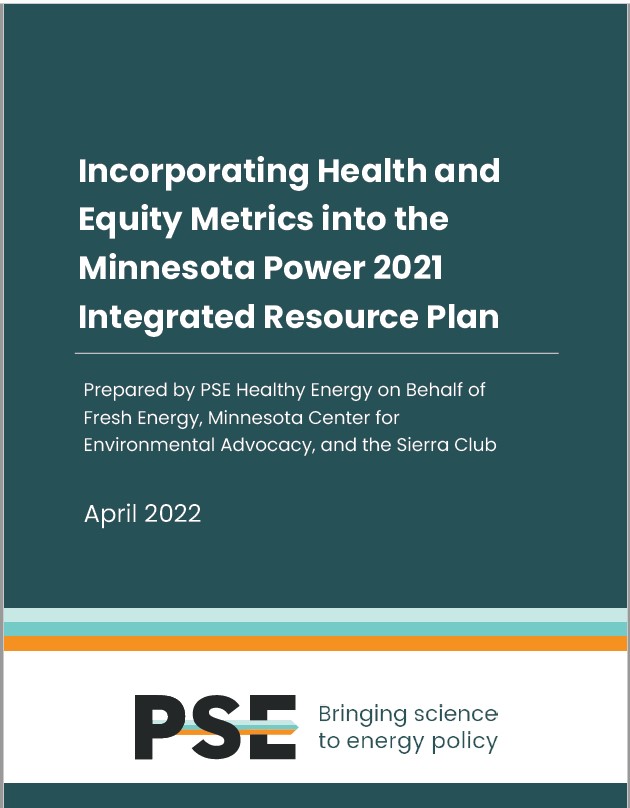
Update: On August 29, 2022, Fresh Energy along with our partners at Clean Grid Alliance, MCEA, and Sierra Club (known in the filing as the Clean Energy Organizations or “CEOs”) filed reply comments in Minnesota Power’s Integrated Resource Plan (Docket #21-33) at the Minnesota Public Utilities Commission. The comments emphasized the points made in our initial filing (see blog post below) and included the Inflation Reduction Act (IRA) as the latest in an extensive list of reasons the Minnesota Public Utilities Commission should remove Minnesota Power’s plan to build the Nemadji Trail Energy Center combined cycle fossil gas plant.
At the core of Fresh Energy’s clean electricity work is our commitment to keeping Minnesota on the path to a clean energy future and helping the state meet its climate goals. One key way we do this is through engaging in utility Integrated Resource Plans (IRPs) to help guide both long-range and short-term investments in more efficient, flexible electric systems as well as in wind, solar, and storage. If you would like to learn more about IRPs, check out our explainer blog post, What’s up with Integrated Resource Planning?
On April 29, 2022, Fresh Energy along with our partners at Clean Grid Alliance, MCEA, and Sierra Club (known in the filing as the Clean Energy Organizations or “CEOs”) filed initial comments in Minnesota Power’s Integrated Resource Plan (docket #21-33) at the Minnesota Public Utilities Commission. Minnesota Power’s proposed IRP was filed at the Commission in 2021.
Over the past several years, Minnesota Power has done commendable work to reduce its carbon emissions, and our analysis shows that it can go even further and faster. The utility’s plan includes building a new fossil gas plant by 2027 and keeping one decades-old coal plant online past 2030. These, among other key concerns, are addressed in Fresh Energy and partners’ filing at the Commission.
New gas plant is unnecessary for reliability and increases climate and financial risk

Minnesota Power’s proposed Nemadji Trail Energy Center (NTEC) combined cycle fossil gas plant would be constructed in Superior, Wisconsin. The plant would amount to a minimum 40-year, $140 million investment in new fossil fuel infrastructure by Minnesota Power and its customers. The plant received initial approval in 2018 but in the years since, circumstances have changed dramatically. Fossil fuel use has only become more risky and the cost and environmental advantages of renewable energy from wind and solar have only become clearer. Putting Minnesota Power’s customers on the hook to pay for a new fossil gas plant, a major source of new carbon emissions for decades to come, needs reconsideration.
Through modeling conducted by Energy Futures Group, Fresh Energy and our partners (the CEOs) are demonstrating that a plan without NTEC is cost-effective and reduces financial, policy, and climate risk without sacrificing reliability.
The Clean Energy Organizations have filed a “CEO Preferred Plan” that replaces NTEC with wind, solar, and battery storage resources and meets Minnesota Power’s stated capacity and energy needs in every hour of the year. In the near-term (before 2030), the CEO Preferred Plan adds 600 MW of solar and 100 MW of wind. Then, in 2030, once the Boswell 3 coal plant retires (which we discuss below), our plan adds more wind, stand-alone storage, and solar-battery hybrids. In comparison, Minnesota Power’s Preferred Plan adds 200 MW of wind, 296 MW of the NTEC gas plant, and then 200 MW of solar when Boswell 3 retires.
Capacity Expansion Additions: CEO Plan vs. Minnesota Power Plan


“We are excited to put forward a plan that can reliably and affordably put Minnesota Power on a path to decarbonization at the pace and scale of the climate crisis, by avoiding new fossil fuels and investing in renewables and storage,” said Allen Gleckner, lead director, clean electricity at Fresh Energy. “We’re looking forward to working with the Commission and Minnesota Power on what’s next for Minnesota’s second-largest utility.”
Retirement of Boswell Units 3 & 4

Minnesota Power included plans in its IRP to retire Unit 3 of the Boswell coal plant by 2030. Fresh Energy and our partners applaud this plan, but argue that the utility should also take steps to preserve the option of retiring Boswell Unit 4 at the same time. Keeping one of the Boswell coal units running past 2030 carries tremendous risk. There is a worldwide effort underway to cut emissions enough to limit warming to 1.5°C, and multiple pathway studies make clear what this means for the power sector – and that includes retiring coal plants by 2030.
Health and equity should be key considerations in resource plans
Utility resource planning has major implications for public health, environmental justice, economic development, worker and community energy transition impacts, and more. To better understand the connection between health and equity and resource planning choices for Minnesota Power, Fresh Energy and our CEO partners commissioned a report from Physicians, Scientists, and Engineers for Healthy Energy (PSE) that evaluates the public health and energy burden impacts of Minnesota Power’s Preferred Plan. View the full report.

“This is the first time that this kind of research has been done for a utility resource planning process in Minnesota,” said Isabel Ricker, senior manager, clean electricity at Fresh Energy. “The analysis shows us how crucial it is to consider the health impacts of our energy choices — especially for nearby communities. This type of analysis should become a standard part of long-range energy planning.”
Fresh Energy and our partners will be held a webinar on May 19, 2022, to dive deep into this study data. PSE’s research revealed some significant findings that the CEOs discuss in our formal comments for the Commission. Below are the high-level takeaways.
1. Premature mortality caused by coal and biomass plant emissions.
Minnesotans could see significant public health benefits from earlier retirement dates for Minnesota Power’s coal and biomass plants. Boswell has significant negative health impacts for the region, and Hibbard, though a small source of power, has disproportionately large health impacts – especially for the Duluth area. The state could save hundreds of millions of dollars in health costs by closing these facilities earlier than Minnesota Power plans.
2. Health costs Boswell and Hibbard fall most heavily on lower-income communities, communities of color, and Native populations.
Communities located nearest to and downwind of these plants face the highest per-capita health consequences. PSE’s research and evaluation of the socio-economic and geographic distribution of the health impacts found that they disproportionately fall on communities with other socio-economic burdens that make residents more vulnerable to the respiratory and cardiac impacts of air pollution.
![Kris Spenningsby of Minnesota Power [HeatingTheMidwest, p1]](https://fresh-energy.org/wp-content/uploads/2022/04/Hibbard-Kris-Spenningsby-of-Minnesota-Power-HeatingTheMidwest-p1.png)
Importantly, Hibbard is located in west Duluth with a significant nearby population. 30,000 people live within a three-mile radius of the plant, and many are lower-income. Pollution from this plant disproportionately impacts Native populations, by a factor of three. Because of these significant and disparate health impacts, the CEOs modeled the immediate retirement of Hibbard and found that removing this small but polluting plant from the resource mix would save customers money. We’re asking the Commission to approve retirement of the Hibbard plant as soon as possible.
3. Major lifecycle greenhouse gas impacts of new gas plants like NTEC.
NTEC’s true climate impacts are more than double its direct CO2 emissions. A recent meta-analysis found that in the U.S., 2.9% of delivered fossil gas leaks out of the system as methane and as a result, the radiative forcing (global warming impact) of fossil gas over a 20-year horizon is 92% higher than its direct CO2 emissions from combustion. When we considered nitrous oxide emissions in addition to upstream methane, NTEC’s climate impact more than doubled compared to baseline CO2 emissions. It is crucial that Minnesota decision makers take full lifecycle emissions into account when evaluating the social costs of fossil gas infrastructure.
4. Strategies to reduce energy burden and improve equity of clean energy access.
Understanding how utility investments and programs stack up against the socio-economic characteristics of a utility’s customers can reveal important insights for energy access and equity. PSE’s analysis revealed that Minnesota Power needs to invest significantly more in low-income residential efficiency projects and community solar projects that prioritize access for under-resourced customers, in order to stabilize electricity costs and reduce disparities in energy burden.
5. Resource planning can and should include a robust analysis of the equity implications of potential resource pathways.
The report from PSE provides one example of how Minnesota utilities’ resource planning processes can consider in an empirical way the public health impacts of electricity generation choices, and the geographic and demographic distribution of those impacts. These are critical factors to consider in long-range planning, and we are committed to ensuring that future proceedings include a similar analysis to help communities and policy makers understand the full impact of energy investment decisions.
What’s next?
In the last few years, new scientific findings have made it abundantly clear that deep decarbonization of electric utilities by 2030 is essential to protecting the public interest. The initial filing deadline for comments on Minnesota Power’s IRP was April 29, 2022. The process will stretch into the summer with a second filing deadline, Commission hearings, and more. Fresh Energy staff will be engaged in every step of the process.
Our state’s electricity future depends in large part on the plans and investment choices of our utilities like Minnesota Power. Fresh Energy has a 30-year history of expert engagement in the IRP processes for the major utilities in Minnesota. Our staff is dedicated to ensuring utilities plan for the future in a way that benefits customers while keeping Minnesota on track to meet its crucial carbon reduction goals.
Check out the webinar!
You can tune into our webinar from May 19, 2022, below on YouTube or by streaming the audio on Decarbonize: The Clean Energy Podcast available on your favorite podcasting app.

